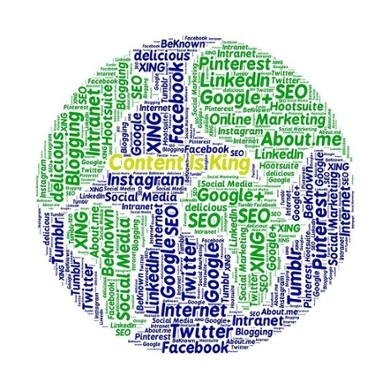
Lead generation is essential for running a successful business. Whether you sell industrial equipment, office furniture, or telecommuncation equipment, you'll need access to qualified sales leads in order to succeed. While there are dozens of different ways to acquire leads, one of the most effective is content marketing.
What is Content Marketing?
Content marketing refers to the process of creating, curating and distributing relevant content to a specific demographic or audience with the goal of generating conversions. Technical jargon aside, it's the creation and distribution of commercial content to your target market. By investing some of your resources into content marketing, you'll reap the benefits of more sales leads; plus the results are residual, so you'll be able to leverage your assets(content) over and over again.
The basis of content marketing is that you are providing desirable information to your prospects in exchange their contact information, project reuqirements, etc; depending on where the prospect is in the sales funnel.
Identify Your Target Audience
Before you can utilize content marketing to generate new B2B leads, you must first identify your target audience. If you operate a commercial moving business, then perhaps your audience is businesses who are looking to relocate their existing operations. This will help you by finding more moving leads, and help your prospect by giving them information about how to execute a commercial move. By identifying your target market, you'll have an easier time creating content that's relevant and meaningful to prospective customers; thus, increasing your lead conversion rate. The key principle behind content marketing is that your content is for your prospects, so your topics need to be something that THEY will find valuable.
Choosing Your Content Platform
After identifying your target audience, you'll need to choose a platform on which to publish your content. One of the easiest and most effective platforms is a website; typically on a blog or resources page. Assuming you have a website for your business (and you should), you can publish content directly to it.
Of course, there are other content delivery/publishing platforms available as well, including social media, forums, email newsletters, and even YouTube videos. Remember, there's no rule stating that you must only use a single platform. We suggest publsihing content on several platforms at the same time.
Publish Relevant Content
Next, you'll need to actually create and publish content that's relevant to your target audience. Ask yourself: what kind of content are my business's prospective customers interested in? For example, if you sell office furniture, perhaps you can publish a piece of content like "How to Choose the Best Type of Workstations for Your Company" or "5 Reasons Ergonomics Needs to be Considered with Your Workstations". You can even create reviews of the different equipment, listing their features, specifications and other information.
Keep in mind this is a top of funnel strategy. Meaning if somebody were to download your content about how to select the best workstations, they are more than likely going to be purchasing new office equipment in the future.
Marketing Your Content
The final step is to market your content. Some content will promote itself, such as the case when content goes “viral.” In most cases, though, you'll need to put forth at least some effort to drive traffic to it. Posting links to your content on social media is a great way to drive traffic, or you can link to the content in your newsletters and other web properties.
What to learn more? Get in Touch
Latest Posts
-

June's New Distribution and Supply Chain Planned Projects Return to March’s 183 Confirmed Figure
-

Food and Beverage Rebounds with 56 New Planned Projects Igniting Growth After Decline
-

June 2025’s New Industrial Construction Projects Grew 7% Month-Over-Month
-

Q2 Industrial Manufacturing Soars 31% for Planned Projects Over $100M; June Planned Industrial Projects Hit 141

